London is the center of the British world, and as the capital of an empire, the city has for centuries been inspired by cultures around the world, and it has left its mark in the city’s streets. London is a metropolis, with something for everyone; it goes for sights, monuments, museums, activities and also the many ethnic restaurants and cultural features that are here.
The museums in London are among the finest in the world and there is something for everyone in British Museum’s fantastic collections. Imperial War Museum and Tower of London are other popular choices. You can find almost anything in the English Capital, just use your imagination and curiosity.
Buckingham Palace, the city’s churches, the political institutions, the landmarks and the many interesting buildings of modern and experimental architecture are also worth noticing. An underground ride with the London Underground should also be included when in London; the old stations are particularly interesting.
For many, a visit to London is also an opportunity for shopping, and you can find it all in the many department stores and high street shops in the city center. There are also many restaurants of the city, not least representing England and every part of the British Empire.
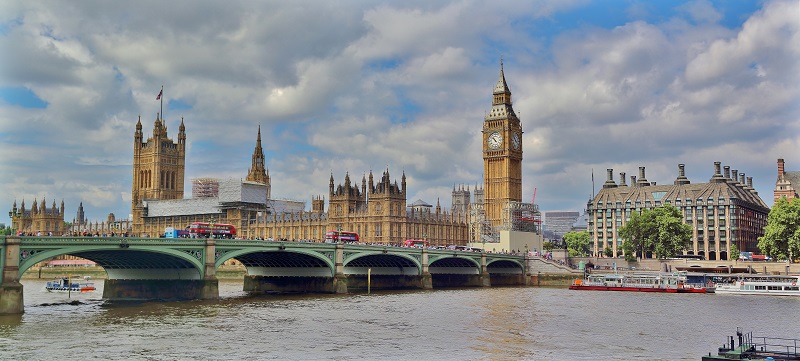
This is Westminster’s famous bell tower with the big bell called Big Ben. The tower is formally called Elizabeth Tower and is one of London’s most famous landmark buildings.
Westminster Palace is one of London’s landmarks and the venue for both the British House of Lords and the House of Commons. The two chambers are collectively called the Houses of Parliament.
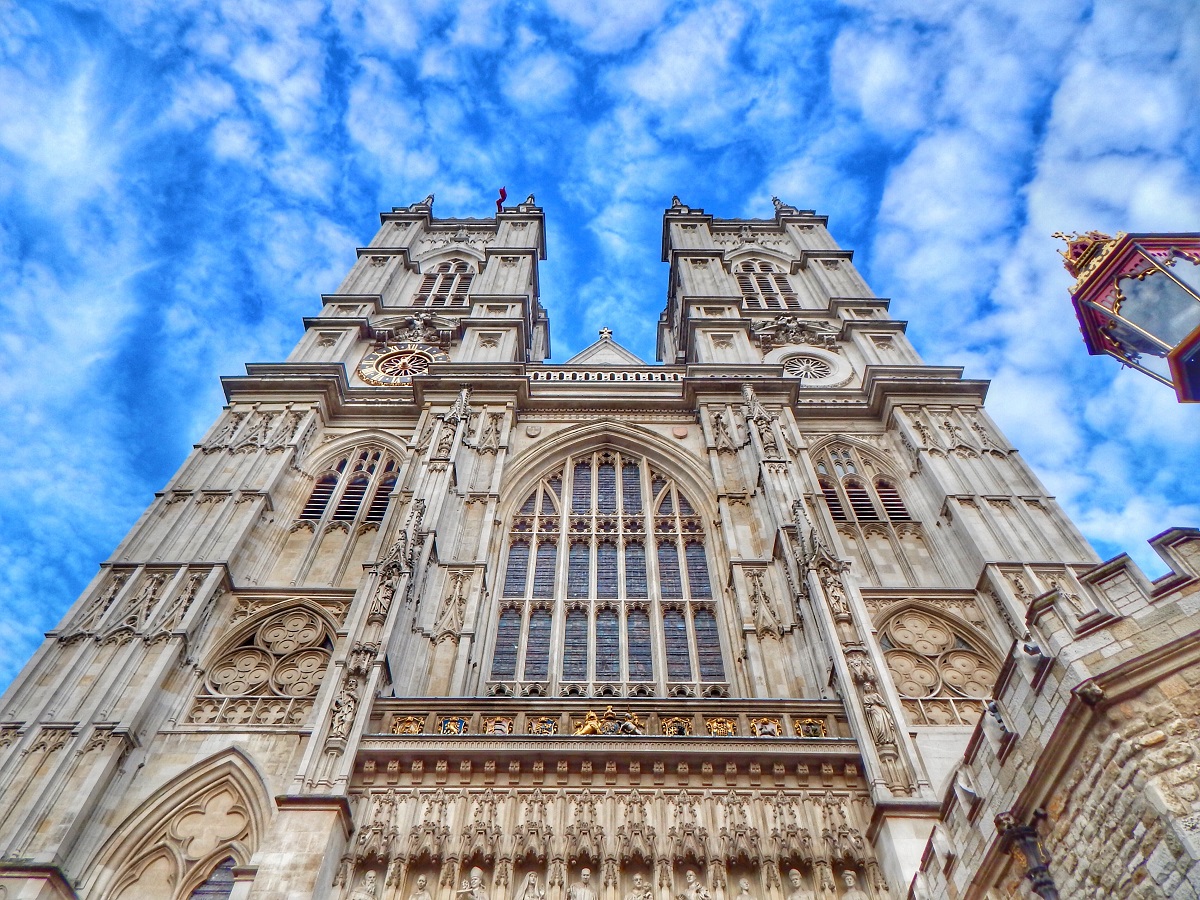
The large and distinguished church Westminster Abbey was founded as a monastery in 1065, and the following year it became the coronation church in England. Since then, British monarchs have been crowned here, and funerals of royals have also been held here.
Tower Bridge is a combined drawbridge and suspension bridge that, with its distinctive architecture and central location, has become one of London’s world-famous constructions.
The Tower of London is the old castle of the Normans, located on the Thames. It was part of the Norman conquest of England. Construction began in 1066, and the Tower is now home to the British Crown Jewels.
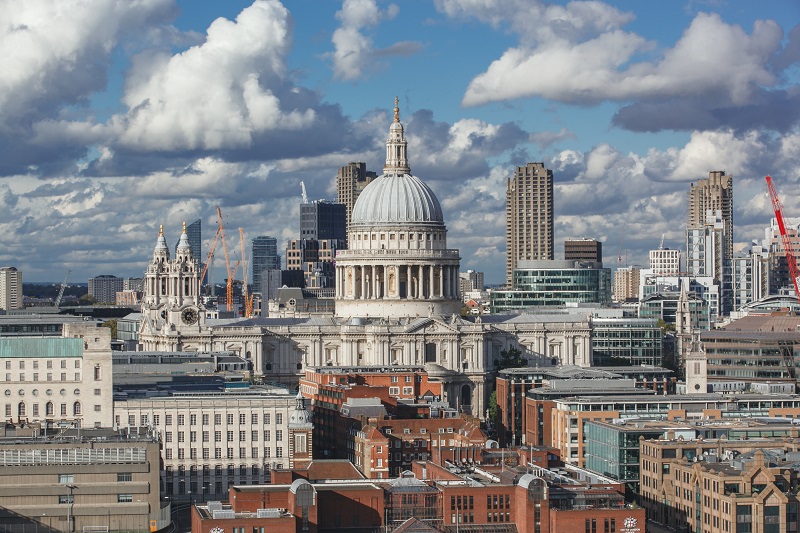
St Paul’s Cathedral is an Anglican cathedral and is the seat of the Bishop of London. It was built on Ludgate Hill, the highest point in the city, and is the masterpiece of architect Christopher Wren.
British Museum is a must for just about every visitor to London with an interest in culture and history from just about every corner of the globe. The museum’s collections are among the largest in the world with countless highlights.
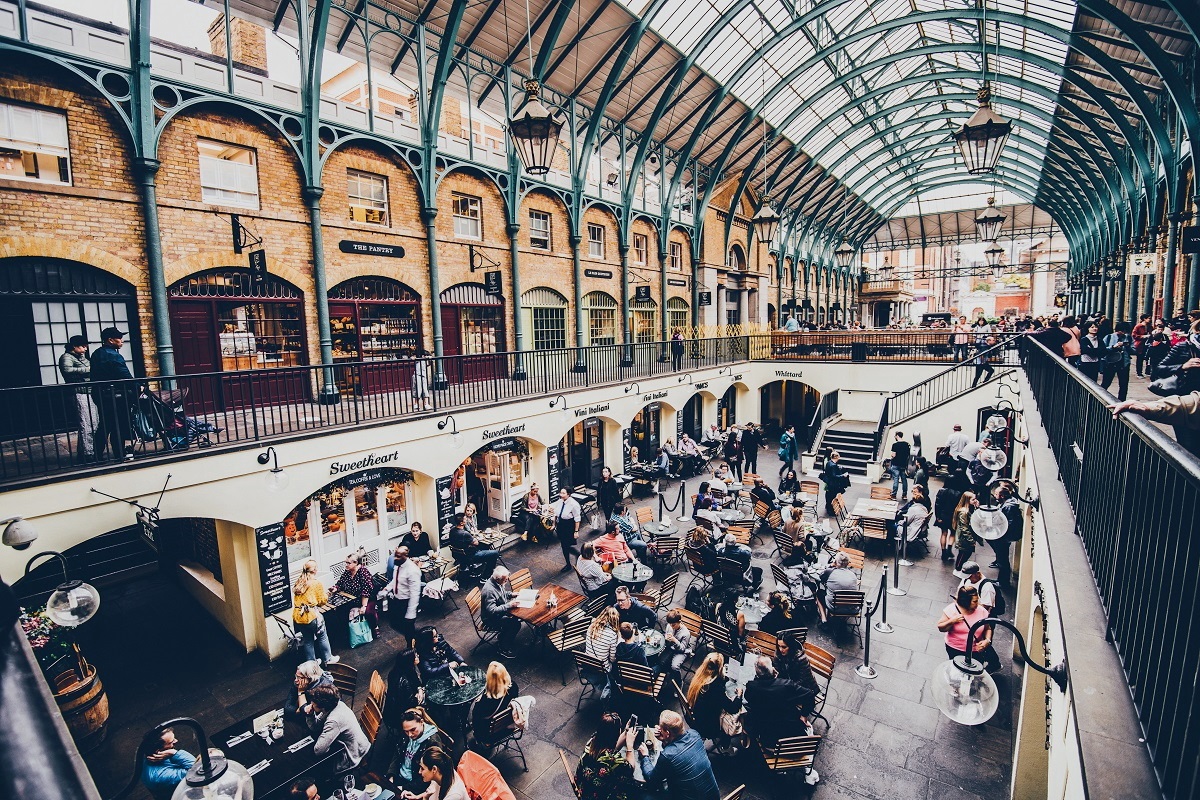
Covent Garden is the name of a neighborhood in London, and for many the name is almost synonymous with the former fruit and vegetable market, which today is the famous Covent Garden Market.
The Imperial War Museum is one of London’s great and famous museums. It was founded in 1917 during World War I. It is an intriguing museum of the British military and the country’s wars.
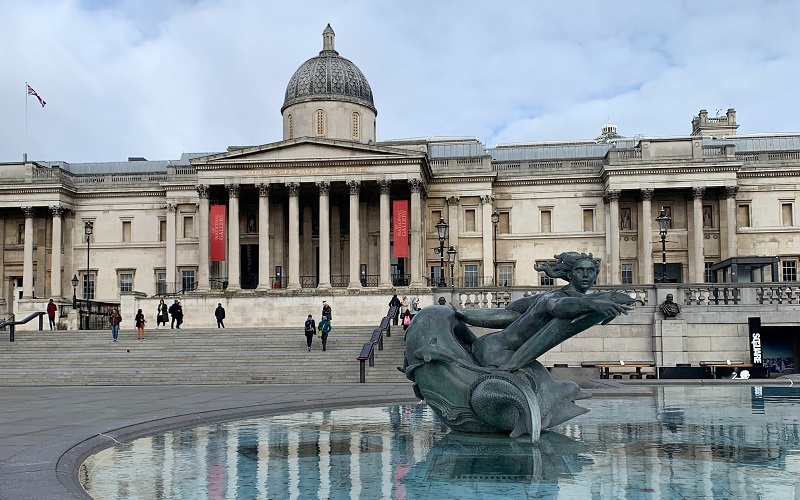
Trafalgar Square is one of the city’s oases where people meet in large numbers when the weather is good. The place is named after the Battle of Trafalgar, where the British fleet conquered France and Spain in 1805.
The National Gallery is London’s finest collection of paintings. The collection and thus the museum was founded in 1824. It contains a large amount of works from the 1200s-1900s by Europe’s leading artists.
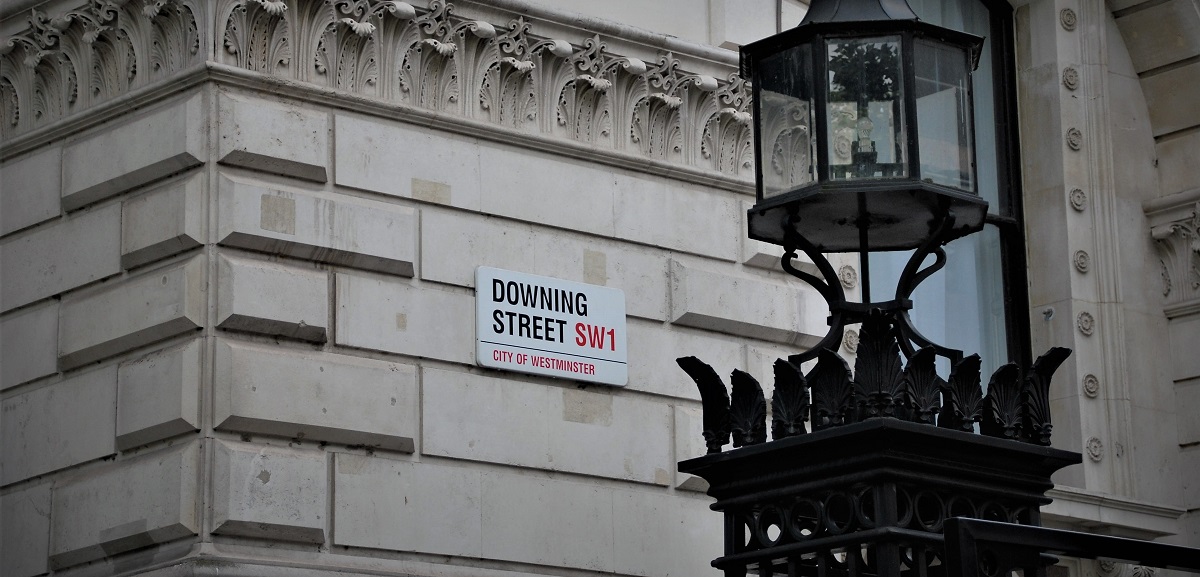
In the short and narrow Downing Street you will find the probably most famous residence in London, namely the official residence of the British Prime Minister. The address is 10 Downing Street.
Piccadilly Circus is one of London’s central squares where there is always hectic and exciting activity. Especially in the evening, all the neon signs are an impressive sight.
The beautiful St James’s Park is a large green space located between the government area on Whitehall and the regent’s residence, Buckingham Palace. The park is laid out around two beautiful lakes.
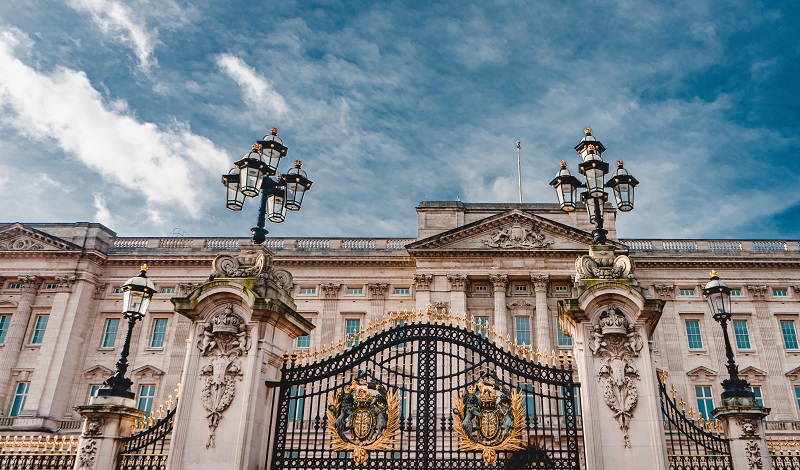
Buckingham Palace is the residence and primary administrative seat of the monarch of the United Kingdom and, of course, of England. You can see the castle and its famous gates from the area around St. James’s Park.
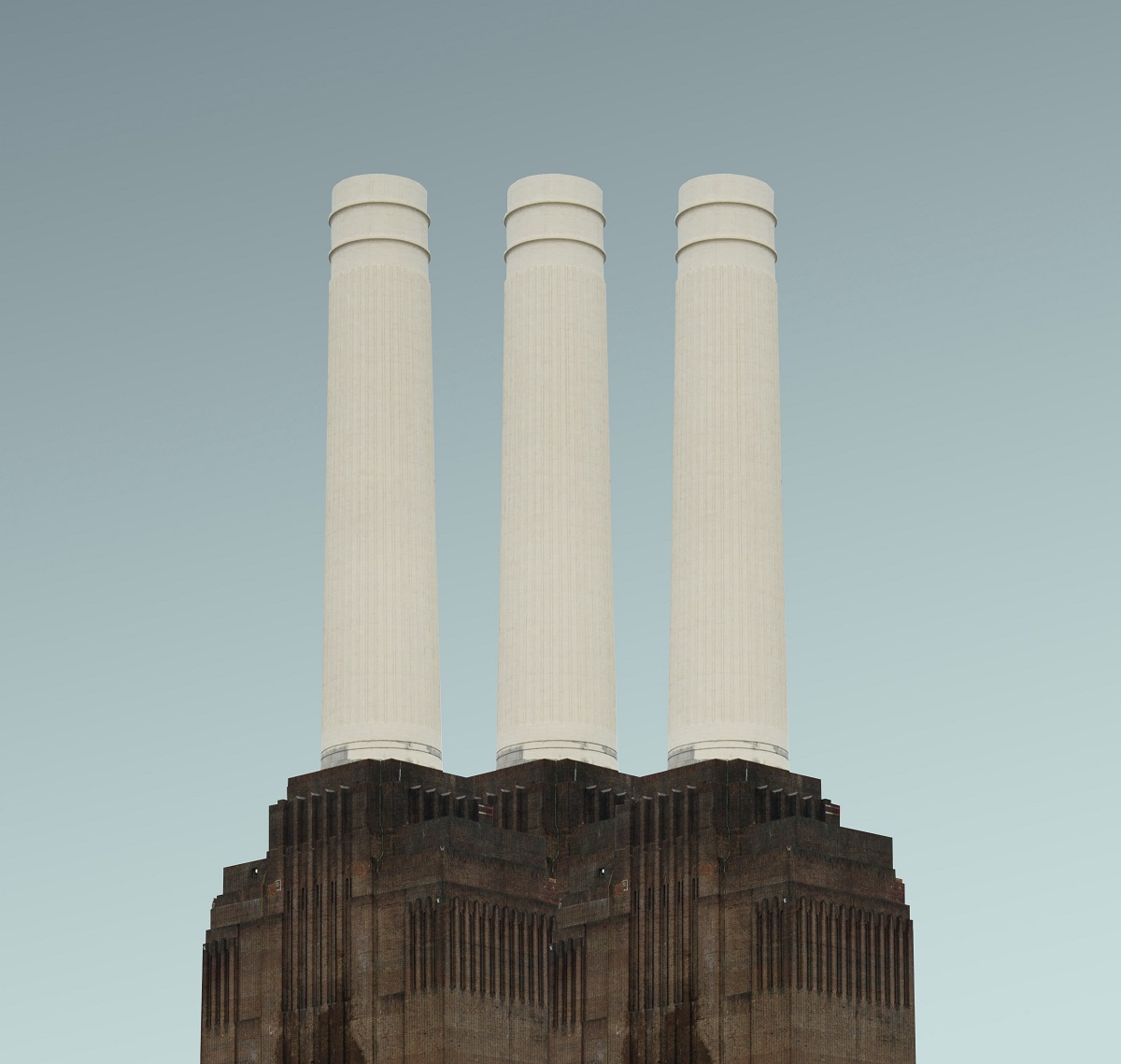
Battersea Power Station is an iconic power plant that opened in its first phase in 1929 in grand and monumental art deco style. Today, the power plant has been revitalized with lots of new activities.
The Shard is the name of London’s 309 meter/1,014 foot tall and characteristically shaped skyscraper that towers over the London Bridge district. The 87-storey, pyramid-shaped building was built 2009-2012.
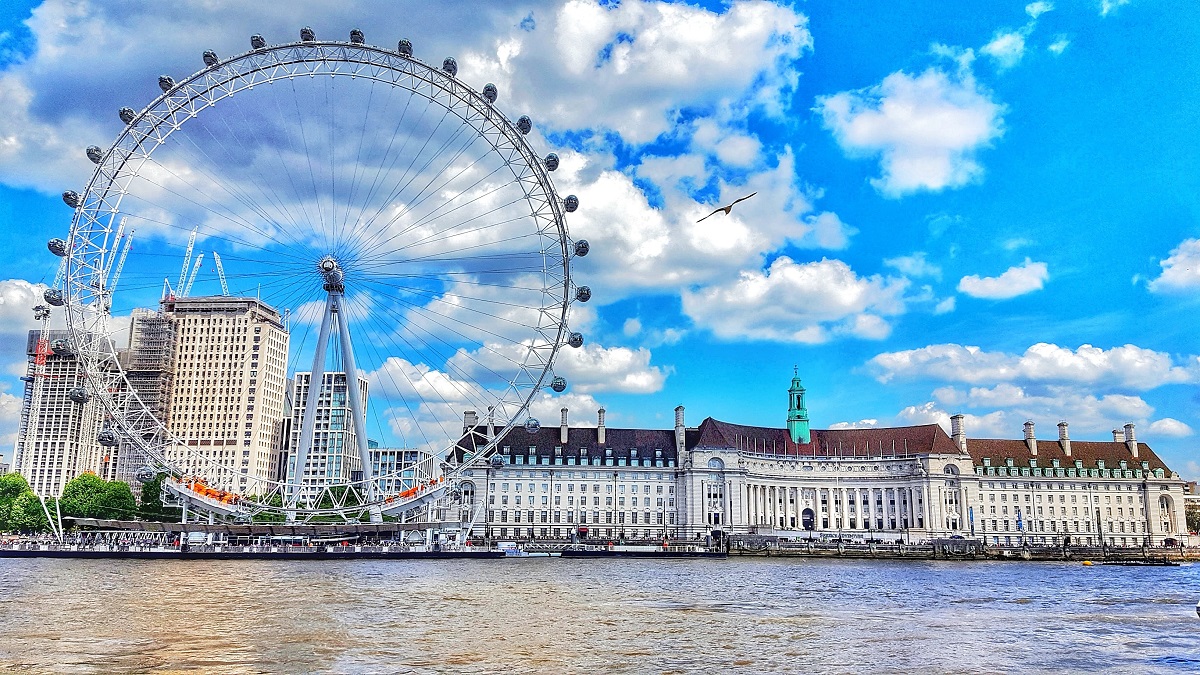
The Ferris wheel London Eye is one of London’s popular attractions, with a prime location in the heart of the English capital. The London Eye was built for the year 2000 celebration.
Monument is a 62 meter/204 foot high pillar, erected in memory of the city’s great fire in 1666. The official name is also Monument to the Great Fire of London.
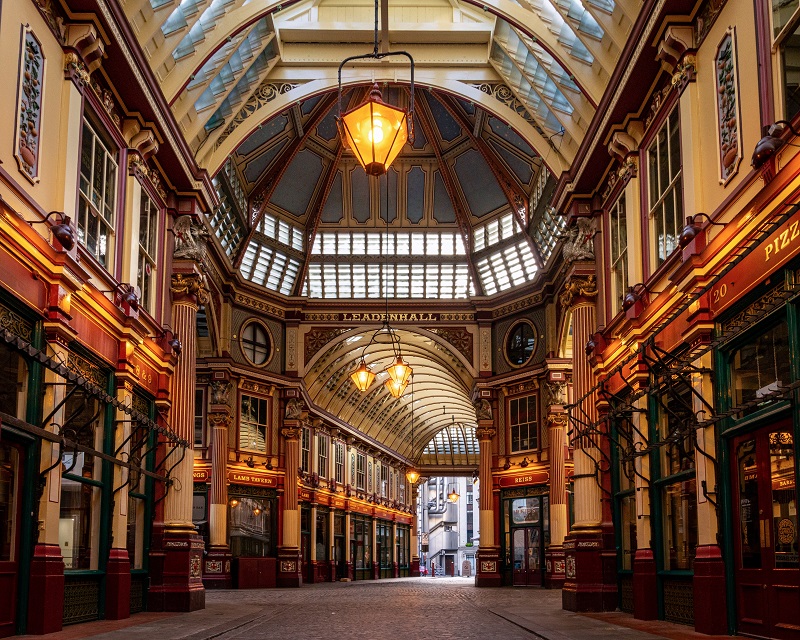
Leadenhall Market is a covered shopping arcade in elegant Victorian 19th century style. The market consists of two intersecting market arcades with a central dome where the streets meet.
This is one of Christopher Wren’s many beautiful churches from the time after the fire in 1666. St. Mary-le-Bow was rebuilt in the years 1671-1673 and is one of many examples of Wren’s design in the neighborhood.
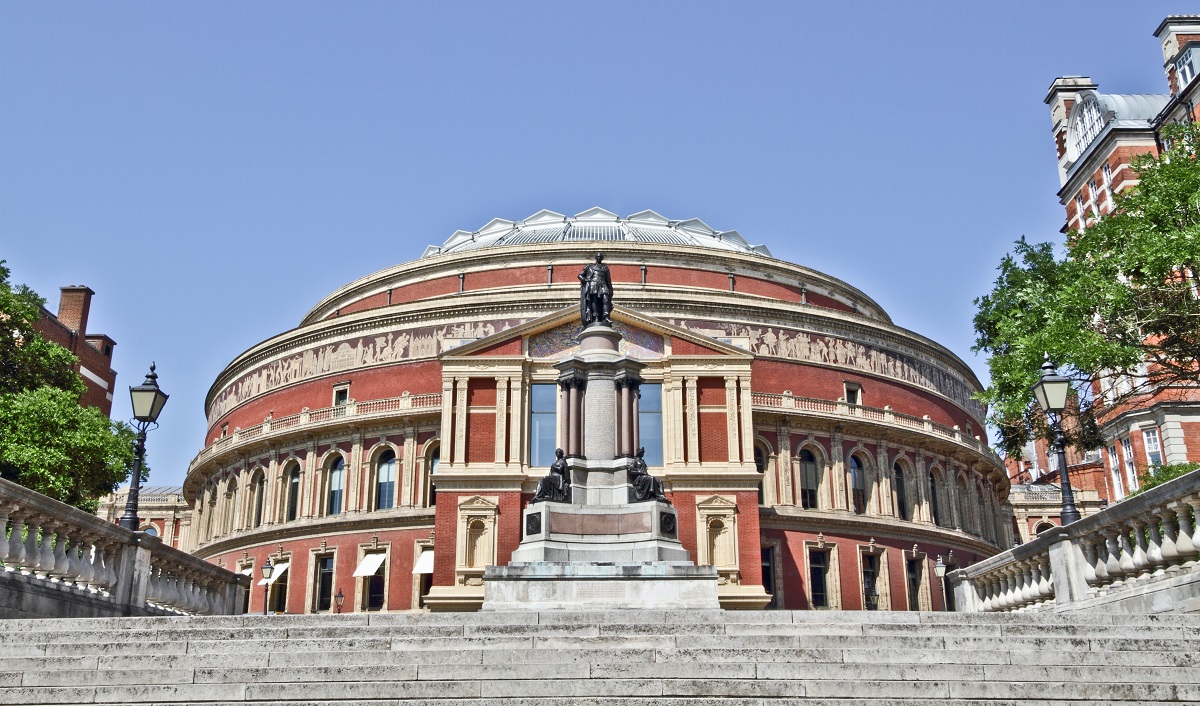
The Royal Albert Hall is a concert hall named after Queen Victoria’s husband, Prince Albert. The Royal Albert Hall was inaugurated in 1871 and is home to the so-called Promenade Concerts, The Proms.
The department store Harrods is for many the epitome of shopping in the English capital. During a visit to Harrods, you should take a tour of the beautifully decorated sales halls on the ground floor.
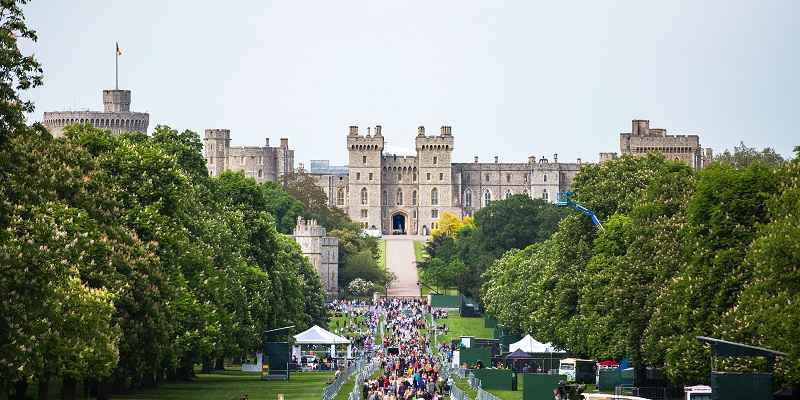
The city of Windsor is beautifully situated on the River Thames west of London. The town is not only home to the royal family’s castle and castle, Windsor Castle, but also to the traditional educational institute Eton College.
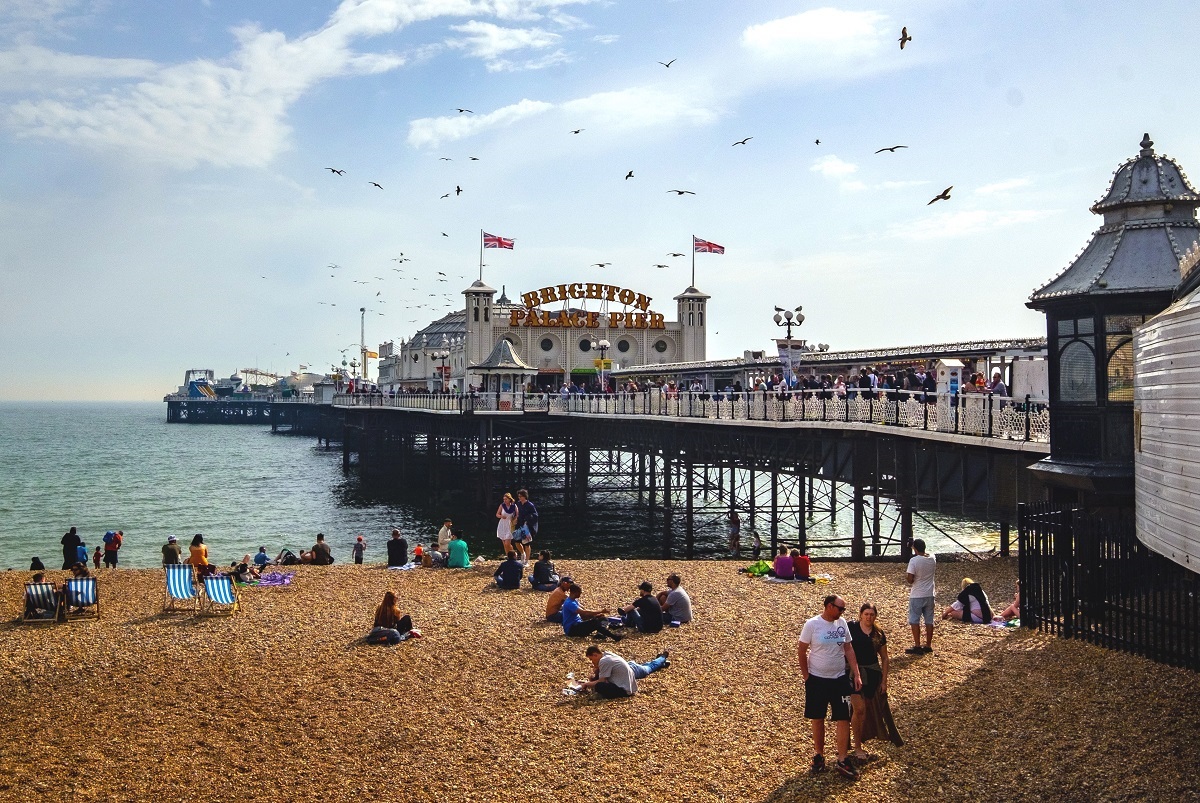
The fashionable and entertaining city of Brighton is located on the south coast of England with its beaches and palm trees. You can also go here for something other than a swim, for example with a visit to the famous Brighton Pier.
Cambridge is one of England’s two famous and traditional university cities, located in the area north of London. The first college in Cambridge was founded in 1284 by people from the university town of Oxford.
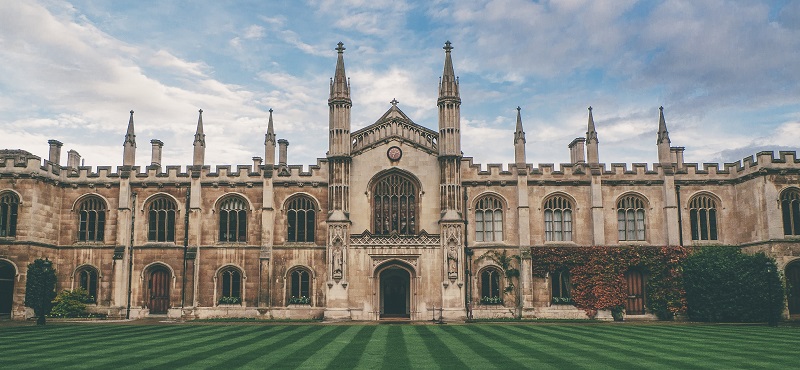
The city of Oxford is located northwest of London. It is world famous for its university and the proud traditions of this place. Oxford University College was founded in 1249 as England’s first.
The prehistoric monument Stonehenge with its stone circles has amazed the modern world for many years. The question is why and how these huge megaliths have been lined up here on the Salisbury Plains.
Covent Garden
coventgardenmarket.com
87-135 Brompton Road
harrods.com
109-125 Knightsbridge 109-125
harveynichols.com
278-308 Oxford Street
johnlewis.com
Sloane Square/King’s Road
peterjones.co.uk
400 Oxford Street
selfridges.com
151 Queensway
whiteleys.com
Bond Street, Brompton Road, Cork Street, Duke Street, King’s Road, Knightsbridge, New Bond Street, Oxford Street, Piccadilly Circus, Regent Street, Sloane Square, Tottenham Court Road
Legoland
Windsor, 40 km/25 mi W
legoland.co.uk
London Aquarium
Belvedere Road
londonaquarium.co.uk
London Dungeon
Tooley Street 28-34
thedungeons.com
London Zoo
Regent’s Park
londonzoo.co.uk
London Transport Museum
Covent Garden
ltmuseum.co.uk
Museum of Natural History
Exhibition Road
nhm.ac.uk
Science Museum
Exhibition Road
sciencemuseum.org.uk
When the Romans invaded England in the year 43, they were to cross the River Thames, and here they built a wooden bridge. It was close to today’s London Bridge, and the bridge quickly became the hub of traffic between the South and the North, and in that way London’s development began.
The city itself was established as Londinium about seven years after the Roman conquest, and after that the development went strong. Many buildings were erected during the early period of growth in the city, crowned by the fact that Londinium became the Roman administration seat of the 100th century in the province of Britannia; it replaced Colchester, which until then had that status.
At this time, the population was already around 60,000. Forum was set up at today’s Leadenhall Market, and the first temple at St. Paul’s was opened. The city was concentrated north of the Thames on the site where Monument was later erected. There were swimming facilities, temples, an amphitheater and other major public facilities.
Around the year 200, the Roman province of England was divided into two, and London became the capital of the most important part, while York became the capital of the second part. In doing so, the city’s enduring status as a leader had been emphasized.
In the 200s, Londinium was exposed to several attacks from the seaside, which led to the city’s defense being expanded. It happened with walls along the Thames where the threat came from. To that end, six of the city’s historic city gates were built; Aldersgate, Aldgate, Bishopsgate, Cripplegate, Ludgate and Newgate are the modern names for these gates.
Defense walls were built around Londinium, but Roman times in Britannia did not continue through the centuries. In the 400s, Roman power in the area ceased and Anglo-Saxon immigration started. Traces of an Anglo-Saxon cemetery have been found around Covent Garden, and it is believed to date back to the 500s and perhaps even 400s.
The Anglo-Saxon city was located a little west of the Roman city, and thus along The Strand between Aldwych and Trafalgar Square in the current town plan. The town was known as Lundenwic and over the years grew to over 10,000 inhabitants in the Anglo-Saxon era.
Around the year 600, the first Christian cathedral on St. Paul’s built, and the Pope’s emissary was to create an archdiocese seat. He chose Canterbury instead of London as a seat, but the city grew nonetheless; primarily due to the good location of the Thames, which meant increased trade and more new districts.
In 842 and 851 London was attacked by Danish Vikings, and in 865 they invaded England. In the winter of 871-872, the Vikings resided in London and retained dominion over the city until the year 886, when Alfred the Great of Essex’s troops conquered it.
The town was then placed under Mercia with Ealdorman Æthelred as leader. The city was then called Lundenburh, and the city was fortified with new defenses and re-established Roman walls. The city’s core was also moved east and behind the Roman walls again. Furthermore, a fortified bridgehead was established south of the Thames in the form of Southwark with the then name Suthringa Geworc. The old Lundenwic was called Ealdwic with reference to the old settlement, and from that comes the Aldwych of today.
Ethelred died in 911, after which Lundenburh became subject to Wessex and thereby the English kings. The city had already become the country’s most important commercial city in the 920s, and in 978 the king made London the capital.
However, the Danish Vikings still attacked London. The city resisted an attack under the Viking king Svend Tveskæg in 994, but the attacks continued despite the defeat. In 1013, the Vikings overcame the English resistance, and Svend Tvesk beard was crowned English King.
Svend Tvesk beard died shortly after, and the former English king was reinstated for a period until Svend Tvesk Beard’s son Knud again attacked and conquered Lundenburh and England. The Danish Vikings first gained dominion over London and England north of the Thames, and then Knud conquered the rest of the country. The Viking Knud was thus new king over both London and the rest of England.
After the first Danish Viking kings in England, Knud’s dynasty went extinct, and the throne then passed to Anglo-Saxon Edvard the Confessor. Under Edvard, Westminster Abbey was founded, and the King was primarily in precisely Westminster.
Edvard The acquaintance died in 1066, leaving no clear and formal successor. Jarl Harold Godwinson was elected king and crowned at Westminster Abbey, but he did not sit long on the throne. William of Normandy had claimed the throne as Edvard the Confessor’s successor, and he attacked England and won the throne and power of the Battle of Hastings on October 14, 1066. William and the Normans went to London, and after the conquest of the English capital, William was crowned in Westminster Abbey as King William I.
London flourished vigorously in the following years; among other things through the rights the city got to the surrounding land, but much was also built as a Norman fortification of the city. The Tower of London to the east and Windsor Castle further to the west were erected in defense of the city; Tower was the first stone castle in England, which emphasized the importance of both the castle and London.
Administratively, after the French model of 1191, London was equipped with a civilian government led by a mayor. One of the initiatives was to prevent the frequent fires by building firewalls in stone.
London’s general political influence increased significantly in the 12th century, where it had previously been only a trading center. Westminster Palace was erected and with it the political power of the country was established.
Of other construction in the former Norman era was also the famous London Bridge. The plant was started in 1179 and the bridge could be commissioned in 1209. The bridge was important to the city and its trade, and it was the only bridge across the Thames until 1739.
During the 13th century, many monks came to the country, and they quickly built fortunes to erect many of the great church buildings one can see today. The number of churches followed a growing population. Around the year 1100, about 15,000 lived in London, and by the year 1300 the number had grown to about 80,000.
London’s rising international role also started part of the city’s development. The industries of the city and the busy port were important parts of the rapidly growing production and trade that characterized the English capital.
With the start of Tudor’s house as regent with Henry VII in 1485, London again saw a building boom, and in particular many mansions and palaces were built.
Among other things, the 16th century of the Tudor period was marked by the Protestant Reformation, and London was the center of the English Protestants. The new religious currents came from the European continent to London through the city’s many international connections. In London, the Protestant ideas could spread through the city’s media and intellectual class.
King Henry VIII started the dissolution of the Catholic orders and monasteries in England in 1536, and it became of great importance to London. Of course, the church was reformed religiously, but as the Catholic churches and ordinances owned large parts of the city, the town’s property conditions also changed. Many of the church’s mansions were taken over by various wealthy noble families.
The 16th century was also a century in which London and England seriously developed a trade with large parts of the world. Russia, America and India were important trading places for the English, and trading companies such as Muscovy Compnay and the British East India Company gained considerable power in the growing empire.
At the same time as trade developments, London’s population continued to rise dramatically. There were about 50,000 living in London in the 1530s, and at the beginning of the 1600s there were approximately 225,000 citizens in the city.
London had been considerably expanded, and through the 17th century the city grew seriously beyond the old city limits. Among the new inhabitants were, for example, some aristocrats and the English country nobility who built residences for residence in London, where they enjoyed the social life of the city.
During the 17th century, however, London was also hit by several major accidents. The sanitary conditions gave rise to the spread of disease, and several outbreaks of plague ravaged the capital. Outbreaks in 1665 and 1666 are believed to have killed 60,000 people or about a fifth of the city’s inhabitants.
London was gradually a very large city with dense settlement, and in 1666 another accident struck London; the city’s big fire, which laid many neighborhoods in the old London desert.
On Sunday, September 2, 1666, a fire started at 1 a.m. in a bakery in the street of Pudding Lane. There was easterly wind, and it quickly caught the flames, which spread to several buildings, many streets and entire neighborhoods. The fire was first extinguished on Thursday, and the many days of fire had left its mark in the cityscape.
About 60% of the City had been destroyed by the fire, and among other things, it had damaged no fewer than 87 parish churches, the old St. Paul’s Cathedral, the city’s stock exchange and a host of other buildings.
After the fire, London was to be rebuilt, and just days after the fire, the King was presented with three different proposals for new town plans by Christopher Wren, John Evelyn and Robert Hooke respectively. The plans offered rectilinear streets and large spaces according to European models of the time. Instead of these, London was developed from the street network from before the ravages of the fire.
After the fire in 1666, the rebuilding of the English capital began. Only wood was used for doors, windows and storefronts; otherwise the new buildings should be of stone to protect against any future fires.
Christopher Wren’s proposed new town plan was not realized, but Wren was spearheaded for the rebuilding of countless burned-out and destroyed churches as well as for the construction of a new St. Paul’s Cathedral. Wrens St. Paul’s stands as one of London’s major sights, just as many of his churches are beautiful contemporary architectural gems.
Other large plants also saw the light of day in the latter half of the 1600s. The royal power, several nobles and wealthy men erected new residences; eg King William III’s establishment of Kensington Palace as a large residence following the acquisition of the property in 1691.
Throughout the following century, the rapid development of London continued. The city gained further political power in 1707, with the parliaments of England and Scotland assembled under a British parliament in the unified country of the United Kingdom.
Later in the 18th century, the Seven Years’ War broke out between some of Europe’s leading powers. The war was fought in 1756-1763, and one of the most important achievements for Britain was the French defeat, which ended France’s political dominance in Europe and much of North America. It gave way to Britain, which at that time strengthened its position in India and North America, among others, and it benefited the London commercial houses greatly.
In the mid-18th century, London was expanded with several new districts, giving new space to the city’s continued growth. A few decades later, George III purchased the mansion Buckingham House by the Duke of Buckingham; it was in 1762, and over the next several years British regents expanded the mansion into a new magnificent residence castle.
New industries also came to town, and in the 1700s Fleet Street was developed as the home of the press, and from this a number of newspapers were published over time. The trade in the city was given infrastructurally better opportunities when it was decided to establish a new bridge across the Thames. It happened with the opening of the Westminster Bridge in 1750 and before that all traffic had passed over the London Bridge.
London’s population numbered around a million around 1800, making the English capital the world’s largest city. The city was thriving, and the wealth of the wealthy increased, while there was still marked slum and poverty for others. Part of the city’s life was described by Charles Dickens in Oliver Twist, while the trade prospered, and London’s political leadership role in the world merely expanded.
The area of the city was significantly expanded and the population increased to 2.7 million in 1851, with the industrial revolution further developing London and England very rapidly. The railroad was a reason for the rapid growth. With it, train connections were made to suburbs where the middle class could live while working in central London.
The first London railroad was opened in 1836 and it connected the London Bridge with Greenwich. In the following decades, large terminus stations opened in many parts of the city, and in 1863 the world’s first subway was opened in London.
London, England and the United Kingdom were at their international highs in the mid-1800s. The splendor and empire were displayed at the Great Exhibition in 1851; the exhibition was held in the famous Crystal Palace.
London’s population grew throughout the century, and from 1 million inhabitants in 1800, 6.7 million lived at the turn of the 20th century.
At the end of the 19th century, London gained more economic and political competition among the world’s major cities, with not least Paris and New York beginning to make London the rank of battle as the center of much of the world’s economy and politics.
However, London continued its development into the new century. The infrastructure was expanded with subway extensions, and a tram network was also built in the city streets.
The 1900s started with a large British empire ruled from London, but independence requests from countries and the impending world wars changed that status by bite. During World War I, London was attacked and bombed by German zeppelin bombers, and several attacks destroyed buildings in the city.
After being hit by the international economic crisis in the 1930s came World War II, which went hard over London. Many children had been evacuated to rural areas in England, and the remaining population lived with shelters and fears of the many German bombings that repeatedly struck, especially between September 1940 and May 1941. V1 and V2 rockets were used as bombs from 1944 , and a total of about 30,000 were killed during the attacks. Many buildings were also crushed and large parts of London had to be rebuilt after the end of the war in 1945.
A great reconstruction work was started from 1945, but it took many years before the war’s years were healed. Meanwhile, however, there was also time for other and more joyous events such as the Olympic Games held in London in 1948. Three years later, The Festival and Britain were conducted, and the activities gave new optimism and faith in the future.
There was a shortage of housing in post-war London, and through the 1950s and 1960s many concrete blocks of flats were erected around London, giving the city a new character. New neighborhoods and suburbs also emerged during this time. The decades were also a period of great immigration to London from many former colonies and parts of the British Empire, and they clearly changed the city’s population composition.
From the 1960s, London became a cultural stronghold where flows can surface and on to the whole world. Youth culture and Swinging London brought global interest and influence, and it continued with new wave, punk and later britpop music, among others.
Many of the formerly so large and significant industrial areas decayed in the latter half of the 20th century, but from the end of the century a development of the city occurred, and in many places the old ports and industrial buildings were brought to life through new residential, office and cultural projects. They apply, for example, to Docklands, which is an asset in an old port district, and old power plants such as Battersea Power Station.
New architecture was also instrumental in putting London on the 21st century world map. The London Eye Ferris Wheel in the Thames has become one of the city’s landmarks, and renowned architects have supplemented the city’s skyline with exciting skyscrapers such as The Shard. London hosts many global events, but few are on par with the Olympic Games, which once again came to London in 2012.
Overview of London
London is the center of the British world, and as the capital of an empire, the city has for centuries been inspired by cultures around the world, and it has left its mark in the city’s streets. It is a metropolis, with something for everyone; it goes for sights, monuments, museums, activities and also the many ethnic restaurants and cultural features that are here.
The museums in the English capital are among the finest in the world and there is something for everyone in British Museum’s fantastic collections. Imperial War Museum and Tower are other popular choices. You can find almost anything in the city, just use your imagination and curiosity.
About the upcoming London travel guide
About the travel guide
The London travel guide gives you an overview of the sights and activities of the English city. Read about top sights and other sights, and get a tour guide with tour suggestions and detailed descriptions of all the city’s most important churches, monuments, mansions, museums, etc.
London is waiting for you, and at vamados.com you can also find cheap flights and great deals on hotels for your trip. You just select your travel dates and then you get flight and accommodation suggestions in and around the city.
Read more about London and England
Buy the travel guide
Click the “Add to Cart” button to purchase the travel guide. After that you will come to the payment, where you enter the purchase and payment information. Upon payment of the travel guide, you will immediately receive a receipt with a link to download your purchase. You can download the travel guide immediately or use the download link in the email later.
Use the travel guide
When you buy the travel guide to London you get the book online so you can have it on your phone, tablet or computer – and of course you can choose to print it. Use the maps and tour suggestions and you will have a good and content-rich journey.
Big Ben • Buckingham Palace • Bond Street • Tower Bridge • Piccadilly
Overview of London
London is the center of the British world, and as the capital of an empire, the city has for centuries been inspired by cultures around the world, and it has left its mark in the city’s streets. It is a metropolis, with something for everyone; it goes for sights, monuments, museums, activities and also the many ethnic restaurants and cultural features that are here.
The museums in the English capital are among the finest in the world and there is something for everyone in British Museum’s fantastic collections. Imperial War Museum and Tower are other popular choices. You can find almost anything in the city, just use your imagination and curiosity.
About the upcoming London travel guide
About the travel guide
The London travel guide gives you an overview of the sights and activities of the English city. Read about top sights and other sights, and get a tour guide with tour suggestions and detailed descriptions of all the city’s most important churches, monuments, mansions, museums, etc.
London is waiting for you, and at vamados.com you can also find cheap flights and great deals on hotels for your trip. You just select your travel dates and then you get flight and accommodation suggestions in and around the city.
Read more about London and England
Buy the travel guide
Click the “Add to Cart” button to purchase the travel guide. After that you will come to the payment, where you enter the purchase and payment information. Upon payment of the travel guide, you will immediately receive a receipt with a link to download your purchase. You can download the travel guide immediately or use the download link in the email later.
Use the travel guide
When you buy the travel guide to London you get the book online so you can have it on your phone, tablet or computer – and of course you can choose to print it. Use the maps and tour suggestions and you will have a good and content-rich journey.

Trafalgar Square is one of the city’s oases where people meet in large numbers when the weather is good. The place is named after the Battle of Trafalgar, where the British fleet conquered France and Spain in 1805.
The National Gallery is London’s finest collection of paintings. The collection and thus the museum was founded in 1824. It contains a large amount of works from the 1200s-1900s by Europe’s leading artists.

In the short and narrow Downing Street you will find the probably most famous residence in London, namely the official residence of the British Prime Minister. The address is 10 Downing Street.
Piccadilly Circus is one of London’s central squares where there is always hectic and exciting activity. Especially in the evening, all the neon signs are an impressive sight.
The beautiful St James’s Park is a large green space located between the government area on Whitehall and the regent’s residence, Buckingham Palace. The park is laid out around two beautiful lakes.

Buckingham Palace is the residence and primary administrative seat of the monarch of the United Kingdom and, of course, of England. You can see the castle and its famous gates from the area around St. James’s Park.

Battersea Power Station is an iconic power plant that opened in its first phase in 1929 in grand and monumental art deco style. Today, the power plant has been revitalized with lots of new activities.
The Shard is the name of London’s 309 meter/1,014 foot tall and characteristically shaped skyscraper that towers over the London Bridge district. The 87-storey, pyramid-shaped building was built 2009-2012.

The Ferris wheel London Eye is one of London’s popular attractions, with a prime location in the heart of the English capital. The London Eye was built for the year 2000 celebration.
Monument is a 62 meter/204 foot high pillar, erected in memory of the city’s great fire in 1666. The official name is also Monument to the Great Fire of London.

Leadenhall Market is a covered shopping arcade in elegant Victorian 19th century style. The market consists of two intersecting market arcades with a central dome where the streets meet.
This is one of Christopher Wren’s many beautiful churches from the time after the fire in 1666. St. Mary-le-Bow was rebuilt in the years 1671-1673 and is one of many examples of Wren’s design in the neighborhood.

The Royal Albert Hall is a concert hall named after Queen Victoria’s husband, Prince Albert. The Royal Albert Hall was inaugurated in 1871 and is home to the so-called Promenade Concerts, The Proms.
The department store Harrods is for many the epitome of shopping in the English capital. During a visit to Harrods, you should take a tour of the beautifully decorated sales halls on the ground floor.
Similar to London Travel Guide